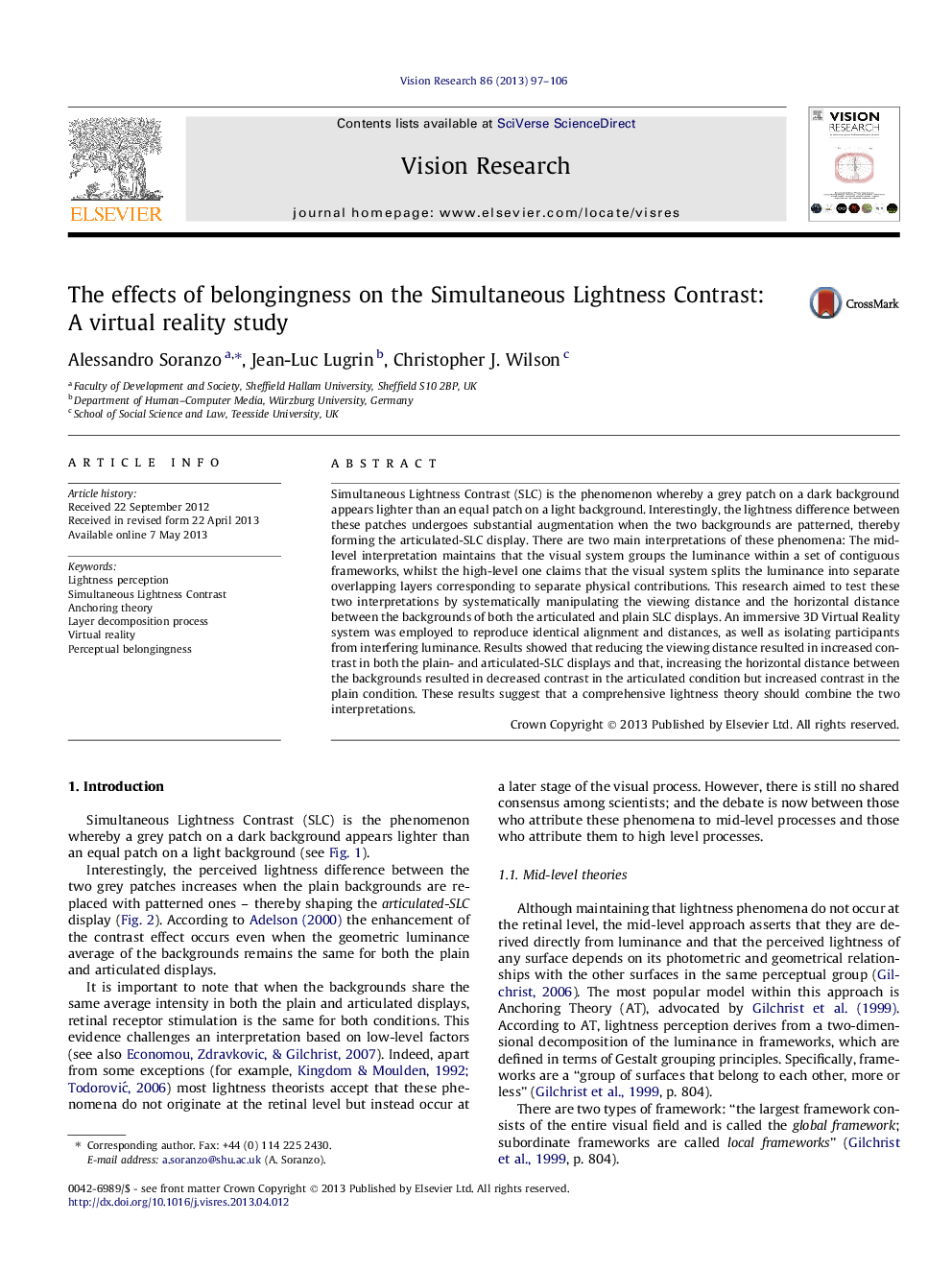| Article ID | Journal | Published Year | Pages | File Type |
|---|---|---|---|---|
| 4033805 | Vision Research | 2013 | 10 Pages |
•In a VR study we contrasted the High- and Mid-level theory of lightness perception.•The magnitude of the contrast effect depends on the horizontal distance between the backgrounds.•Both Mid- and High-level process of visual perception are involved in the contrast phenomenon.
Simultaneous Lightness Contrast (SLC) is the phenomenon whereby a grey patch on a dark background appears lighter than an equal patch on a light background. Interestingly, the lightness difference between these patches undergoes substantial augmentation when the two backgrounds are patterned, thereby forming the articulated-SLC display. There are two main interpretations of these phenomena: The mid-level interpretation maintains that the visual system groups the luminance within a set of contiguous frameworks, whilst the high-level one claims that the visual system splits the luminance into separate overlapping layers corresponding to separate physical contributions. This research aimed to test these two interpretations by systematically manipulating the viewing distance and the horizontal distance between the backgrounds of both the articulated and plain SLC displays. An immersive 3D Virtual Reality system was employed to reproduce identical alignment and distances, as well as isolating participants from interfering luminance. Results showed that reducing the viewing distance resulted in increased contrast in both the plain- and articulated-SLC displays and that, increasing the horizontal distance between the backgrounds resulted in decreased contrast in the articulated condition but increased contrast in the plain condition. These results suggest that a comprehensive lightness theory should combine the two interpretations.
Graphical abstractFigure optionsDownload full-size imageDownload high-quality image (96 K)Download as PowerPoint slide
